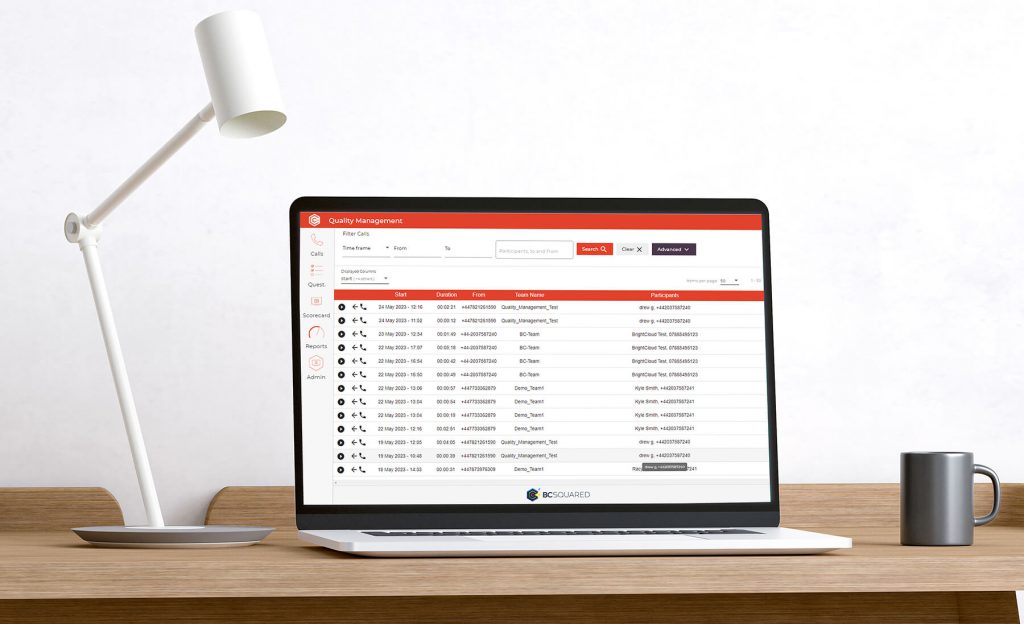Once upon a time, contact centres really were the main way for customers and potential customers to speak to someone and find the solution they needed. Increasingly, however, and particularly since the pandemic, customers now expect a more personalised, omnichannel customer experience.
Customers want to speak to companies in a way that they feel comfortable with, whether that’s via social media, phone, email, SMS, chatbot, or another method, and they want to do it at their convenience.
With the advent of better solutions, contact centres can now more easily increase or decrease staffing levels to suit busy periods, target inefficiencies, receive and act on feedback, and reduce call waiting times by handling customers through other means than just the phone.
Obviously, that means that contact centres have to be ever more flexible and adaptable in how they do business and how they handle customer expectations and engagement.
Looking to the future, here are our contact centre technology predictions for 2024 and beyond:
1. AI-Powered Chatbots: Revolutionising Customer Service
We’ve all had a poor experience at the “hands” of a chatbot. They can be incredibly frustrating and not appear to understand the most basic of questions. But chatbots are changing, and as AI technology evolves, they are increasingly becoming a valid and genuinely helpful solution for contact centres and customers alike.
Language and understanding are improving, to the point where it’s sometimes difficult to even tell if you’re speaking to a chatbot or talking to a real, live human. And, while it might sound like something from science fiction, from a contact centre point of view, this really is a good thing.
Contact centres can now provide a written FAQ and knowledge base but enhance that with Q&A bots that can help customers directly with most of their questions, and then transfer them straight to a human agent at the point where they can’t help any further. When the agent receives this bot chat, they can see everything that’s gone before and what the customer has said already, thus getting to the solution far quicker for the customer, without them having to repeat themselves.
Task bots can also make it easier for agents and customers alike by removing simple tasks from the call queue and reducing waiting times. With a task bot, customers can do simple tasks such as checking their balance, looking at their latest transactions, placing an order, or cancelling an appointment.
AI chatbots are also helping agents and managers by assisting agents with solutions to problems. They do this by using the huge volume of data and customer information available, looking at customer trends, and finding what has worked before and what might well work again.
Checkout this article for more tips on how to implement a virtual agent in your contact centre.
2. The Rise of Cloud-Based Contact Centres
Initially, contact centres were on-premise based, where everything was set up in a huge building, including software, hardware, and all contact centre agents. This can be costly to set up and maintain, which is why companies are now turning to cloud-based contact centres or at least a hybrid solution of both.
This allows agents to more easily work at home or in other remote locations, rather than being confined to the main contact centre. Any businesses that had already adopted this model were well ahead when the pandemic happened as they could simply set up their staff at home and more or less continue with business as usual.
Since the pandemic, it’s become quite the prize and a much sought-after benefit for employees to be able to work from home. Employees save the time and expense of a commute and have more time to themselves at the end of the day, and they can do everything they need to do from home, without needing the massive infrastructure of a call centre.
No wonder cloud-based systems are on the rise.
For company owners and managers, the only thing to be aware of here is that remote employees must be able to easily access the systems they need, and they should feel engaged and valued as part of your team, even if they never visit your main premises.
3. Omnichannel Integration: Seamless Customer Engagement
We talked above about how much customers now expect to be able to contact businesses however they please, whether it’s midnight or midday, and whether they call, text, message on social media, or communicate in any other way.
Contact centres must have omnichannel integration to cater for this and provide seamless customer engagement, no matter how customers approach them. That means customers can expect to be easily transferred from a digital approach to a live call, if needed, without having to explain what they want all over again.
It means that your company must be ready for any type of customer approach at any time of day, and not just to handle it, but to provide a high-quality customer experience that wows.
4. Unlocking Insights with Advanced Analytics
Contact Centre technology comes with highly detailed analytics and massive amounts of data that can provide deep insights into the running of your business and into what your customers and potential customers expect from you.
This data is vital, and you ignore it at your peril. You can use this to develop new products and services, learn how best to market what you do, see the language that your customers use in their feedback and learn to speak the same way and connect better and on a deeper level on social media and in your marketing materials, you can increase efficiency by spotting problems and issues and finding solutions. Really, the list is endless.

Insights from CCBox Quality Management platform help improve productivity and customer experience.
With contact centre technology, you get the statistics you’d expect, such as call waiting times, average length of call, how many calls are in the queue, and other useful information. This is incredibly helpful for scheduling and increasing or decreasing capacity, and with cloud-based systems, it’s easy to scale up for busy times and scale down when peak demand is over. Combine this with analytics, and you may be able to spot patterns to help you increase or decrease staffing levels at certain times.
Supervisors can also help their agents improve with their own suite of analytics to study. As expected, you can see when agents are on hold, when they’re logged off, when they initially signed in, what time they leave, how quickly they pick up calls, how long their calls are, and other useful stats. In addition, cloud-based systems also offer stats such as how closely agents are sticking to in-house scripts. This is incredibly detailed information that offers the chance for managers and trainers to help agents and provide them with what they need to succeed.
Contact our team today to talk more about implementing the latest contact centre technology to meet your business needs.




